
Imagine navigating the complexities of environmental drilling with a tool that's both precise and adaptable—enter the world of DTH drill bits.
DTH drill bits are pivotal in environmental drilling, creating precise boreholes for groundwater sampling, soil gas monitoring, and remediation. Their design ensures efficient penetration through tough substrates, making them indispensable for assessing environmental impacts and facilitating cleanup efforts.
I recall the first time I saw DTH drill bits in action. Their precision amazed me as they cut through rock like a hot knife through butter. These bits aren't just tools; they're game-changers in the field. When faced with the challenge of drilling through various ground conditions, DTH bits provide the versatility needed to install monitoring wells for groundwater sampling or to drill vapor extraction wells for soil gas analysis. Their ability to navigate hard substrates efficiently makes them ideal for in-situ remediation, where injecting treatment agents directly into contamination zones is crucial. The confidence they bring to complex environmental projects is unmatched, ensuring that I can always rely on them to get the job done right.
DTH bits are used for groundwater sampling.True
DTH bits create boreholes needed for collecting groundwater samples.
DTH bits are ineffective in hard substrates.False
DTH bits are specifically designed to penetrate hard substrates efficiently.
Why Are DTH Bits Perfect for Monitoring Well Installations?
Imagine drilling into the earth with a precision tool that adapts to any challenge nature throws your way. That's the magic of DTH bits in monitoring well installations.
DTH bits are perfect for monitoring well installations because they ensure borehole integrity, provide precise drilling, and adapt to various geological conditions for accurate data collection.
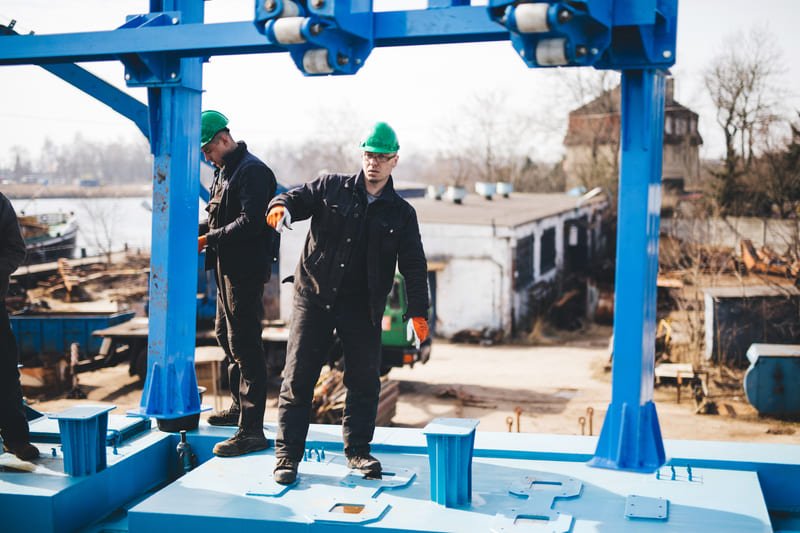
Precision Drilling Capabilities
I remember the first time I saw a Down-the-Hole (DTH) bit in action. It was like watching a master painter at work, each movement deliberate and precise, maintaining the borehole's integrity1 as if creating a masterpiece. This precision is essential when we're talking about sampling groundwater for pollution analysis. The bit drills straight and true, minimizing deviations that could skew data during monitoring.
Adaptability to Geological Conditions
The versatility of DTH bits never ceases to amaze me. Whether facing unyielding rock or navigating through loose sediments, these bits adapt seamlessly without compromising the borehole's quality. This adaptability is crucial when drilling in complex subsurface environments for monitoring wells. I've seen them tackle challenges that would make other tools stumble.
| Feature | Benefit |
|---|---|
| Borehole Integrity | Ensures clean samples for accurate environmental data. |
| Geological Versatility | Allows drilling through diverse conditions without performance loss. |
Efficiency in Environmental Projects
Efficiency is another standout feature of DTH bits. I can't count how many times their rapid penetration rates have saved projects from going over time and budget. They speed up operations while maintaining high-quality borehole construction, a true game-changer when time and money are tight.
Versatility in Application
These bits aren't just for groundwater sampling. They excel in soil gas sampling and vapor extraction wells, assessing contaminant volatilization. I've witnessed their versatility extend to remediation projects where they inject agents directly into contamination zones, making environmental restoration efforts much more effective.
Learn more about their versatility2 in applications like soil gas sampling and vapor extraction wells.
Long-Term Monitoring
The durability of DTH bits is impressive. They endure long-term monitoring projects without frequent replacements, reducing downtime and maintenance costs. Their robust design has saved me and many others from countless headaches in continuous environmental monitoring projects.
DTH bits maintain borehole integrity during drilling.True
DTH bits ensure stable, uncontaminated boreholes, crucial for accurate data.
DTH bits are ineffective in diverse geological conditions.False
DTH bits efficiently penetrate various formations without quality loss.
How do DTH bits enhance soil gas sampling techniques?
Have you ever wondered how the right tools can completely change the game in environmental science?
DTH bits revolutionize soil gas sampling by offering precise drilling, which allows for accurate sample collection and minimizes contamination risks. These versatile tools ensure reliable data for environmental assessments by maintaining consistency across various substrates.
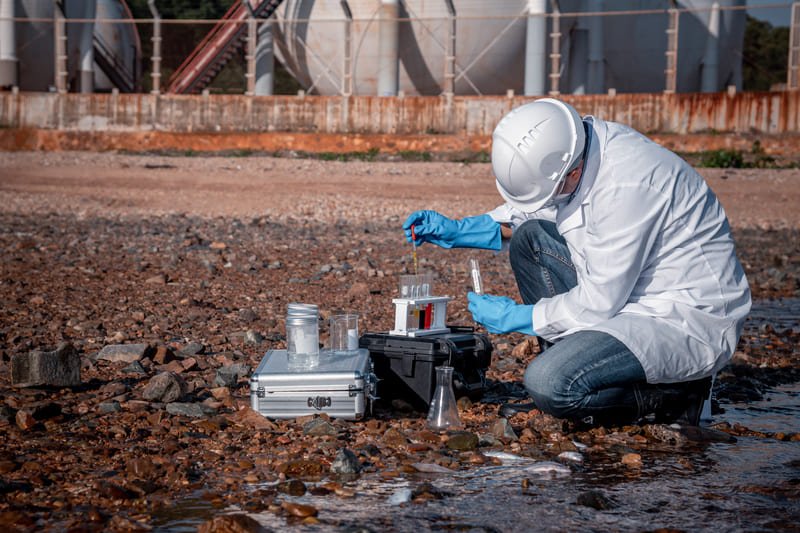
I remember my first encounter with Down-the-Hole (DTH) drill bits during a project that felt as monumental as climbing Everest. We were tasked with assessing soil gas levels in an area notorious for its tough, rocky substrate. The challenge was real: how to get accurate, uncontaminated samples without spending a lifetime swapping out tools.
Precision Drilling with DTH Bits
The precision of DTH drill bits was like having a master sculptor carve into the earth—careful, exact, and controlled. When we drilled those boreholes, I was amazed at how little disturbance occurred in the surrounding soil. It was crucial because when you're dealing with something as delicate as volatile organic compounds, even the slightest contamination can skew results. I could almost hear my environmental science professor’s voice reminding me of the importance of clean boreholes.
Efficiency in Varied Substrates
I’ve seen DTH bits tackle everything from stubborn rock to softer, loamy soils with such finesse that it seemed they had a mind of their own. This adaptability meant fewer tool changes and more time focusing on the data collection itself. It reminded me of a Swiss Army knife, always ready for the next challenge without missing a beat. It’s these efficiencies that make DTH bits an invaluable partner in our work. Learn about diverse geological conditions3.
Minimizing Contamination Risks
Creating clean, stable boreholes is like crafting a perfect cup of coffee—every step matters. When assessing areas for contaminant volatilization, the stakes are high. I’ve witnessed firsthand how hydrocarbons can wreak havoc if allowed to vaporize unchecked. DTH bits minimize these risks, ensuring that our data remains pristine and our conclusions reliable. Explore contaminant volatilization4.
Robust Data Collection
Using DTH bits feels like driving a well-oiled machine; there’s a comforting reliability in knowing that each borehole will stand firm, providing us with consistent access points for sampling. This reliability is the backbone of long-term environmental monitoring projects where the accuracy of data over time is non-negotiable. Explore long-term monitoring techniques5.
Table: Benefits of Using DTH Bits in Soil Gas Sampling
| Benefit | Description |
|---|---|
| Precision | Enables accurate borehole drilling without disturbing surrounding layers. |
| Versatility | Performs consistently across varied geological conditions, reducing the need for tool changes. |
| Contamination Prevention | Minimizes risks of cross-contamination by ensuring clean and stable boreholes. |
| Reliable Data Collection | Provides stable access points for consistent sample collection, essential for long-term monitoring." |
DTH bits prevent cross-contamination in soil sampling.True
DTH bits drill precise boreholes, avoiding disturbance of surrounding soil layers.
DTH bits require frequent tool changes in varied substrates.False
DTH bits are versatile and perform consistently across different geological conditions.
How Are DTH Bits Revolutionizing Remediation Projects?
Ever wonder how drilling bits could be the unsung heroes of environmental clean-up?
DTH bits are primarily used for drilling boreholes in remediation projects, allowing for precise groundwater sampling, soil gas extraction, and the targeted injection of remediation agents. This precision enhances efforts to restore and protect our environment.
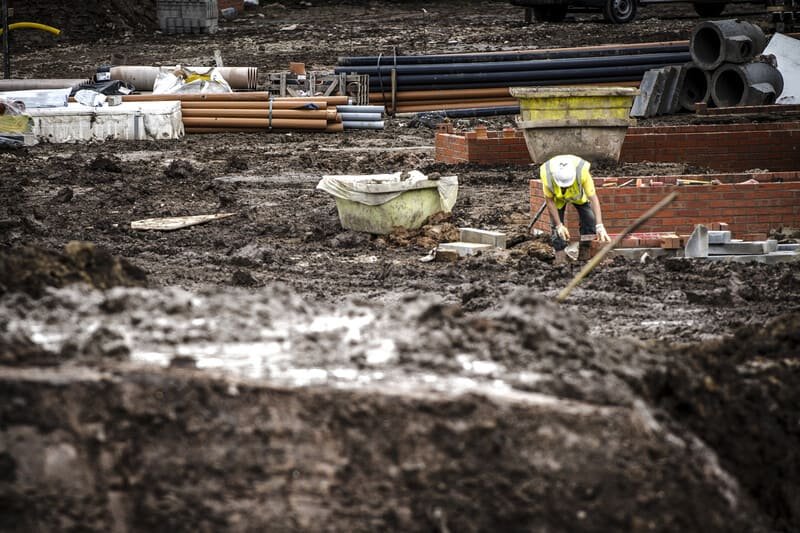
Monitoring Well Installation
I remember standing at a project site, coffee in hand, watching as a team meticulously drilled monitoring wells. Using DTH bits, we ensured that each borehole was perfectly placed. These wells are crucial for groundwater sampling, helping us understand contamination levels and plan our next steps. It’s like setting the stage for an environmental investigation, and DTH bits are our most reliable tools.
Soil Gas Sampling
When it comes to measuring volatile contaminants, precision is everything. I once worked on a site where the soil was saturated with unknown vapors. We used DTH bits to drill vapor extraction wells precisely where we needed them, ensuring accurate data collection. The reliability of these tools can’t be overstated; they make all the difference in assessing contamination levels.
| Application | Purpose | DTH Bit Advantage |
|---|---|---|
| Monitoring Wells | Groundwater contamination analysis | Accurate borehole placement |
| Soil Gas Sampling | Contaminant volatilization study | Precision and reliability |
In-Situ Remediation
For me, one of the most rewarding parts of using DTH bits is during in-situ remediation. I've seen firsthand how these bits allow us to inject treatment agents directly into contamination zones, whether it's for chemical oxidation or bioremediation. I recall a project dealing with hydrocarbon contamination where the precision of DTH bits led to a dramatic reduction in pollutants.
Example: In a project dealing with hydrocarbon contamination, DTH bits were used to create boreholes that allowed for the precise injection of oxidizing agents, resulting in significant pollutant reduction.
Geotechnical Testing
Understanding the geotechnical aspects of a site is crucial before remediation. I’ve learned that having detailed insights into soil permeability and porosity can make or break a project. With DTH bits, drilling for geotechnical testing becomes straightforward, providing us with the necessary data to strategize effectively.
These experiences underscore the versatility of DTH bits in environmental remediation projects6. They are indispensable for precise drilling and sample collection, playing a crucial role in mitigating environmental impacts.
DTH bits ensure precise borehole placement in monitoring wells.True
DTH bits are used for accurate borehole placement, crucial for uncontaminated groundwater sampling.
DTH bits are ineffective for soil gas sampling applications.False
DTH bits provide precision in drilling, enhancing reliability in soil gas sampling.
Why Are DTH Bits Preferred for Geotechnical Testing?
Have you ever wondered why DTH bits are the go-to for geotechnical testing? Well, let me share some insights from my own experiences in the field.
DTH bits are preferred for geotechnical testing because they deliver precise drilling, adapt to various ground conditions, and efficiently collect data. Their design minimizes deviation, making them perfect for accurate subsurface investigations.
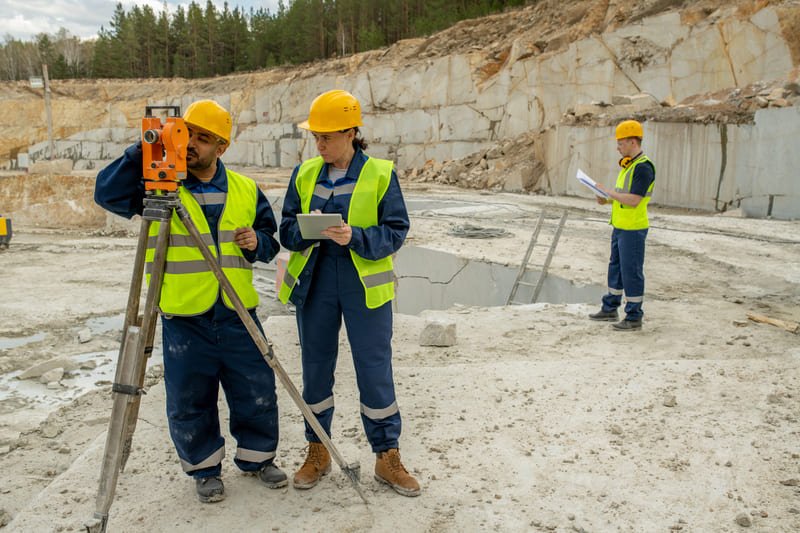
I remember the first time I witnessed the sheer precision of DTH bits. It was on a challenging construction site with unpredictable terrain. Watching these tools slice through layers of earth was like watching a master artist at work. The way they maintained accuracy and minimized deviation was nothing short of impressive.
Precision and Accuracy in Drilling
DTH bits are truly remarkable in maintaining drilling precision due to their unique design. They deliver direct percussive force to the rock face, which minimizes deviation. This precision is crucial when we're talking about geotechnical testing, where accurate boreholes7 are essential for reliable data.
Versatility Across Ground Conditions
Their versatility is something I've come to rely on. Whether we're dealing with soft soils or hard rocks, these bits perform consistently. It’s like having a trusted friend by your side when tackling projects that require detailed subsurface analysis8. No matter if it's rocky terrain or loose sediment, DTH bits adapt effectively.
| Feature | Benefit |
|---|---|
| Minimal Deviation | Ensures accurate boreholes |
| High Penetration | Efficient drilling through tough layers |
| Durability | Long-lasting under demanding conditions |
Efficiency in Data Collection
Time and cost efficiency—two things every project manager dreams of. DTH bits significantly reduce project time without compromising quality. This speed is crucial in time-sensitive projects9, allowing comprehensive testing to be conducted promptly.
Reduced Environmental Impact
In environmentally sensitive areas, minimizing disruption is key. The precision of DTH bits reduces excessive site disturbance, aligning with sustainable practices, which is especially beneficial for environmentally sensitive areas10.
Reflecting on my experiences, I’ve seen firsthand how these bits not only meet but often exceed expectations in the field. They are more than just tools—they’re partners in achieving precision and efficiency.
DTH bits minimize drilling deviation.True
DTH bits deliver direct percussive force, ensuring minimal deviation.
DTH bits are unsuitable for rocky terrains.False
DTH bits are versatile and adapt to various geological conditions.
How Do DTH Bits Assist in the Installation of Piezometers?
Ever wondered how piezometers dive deep into the earth to unlock its watery secrets? It’s all thanks to DTH bits, the unsung heroes of precision drilling. Let me share how they make it all happen.
DTH (Down-the-Hole) bits are crucial for installing piezometers due to their ability to perform precise and deep drilling in various ground conditions. They ensure minimal ground disturbance, essential for accurate groundwater pressure readings.

Understanding Piezometers and Their Role
I remember my first encounter with a piezometer installation project. It felt like we were on a mission to uncover hidden worlds beneath our feet. Piezometers are indispensable tools for monitoring groundwater levels and soil pore pressures. They're used everywhere from construction sites to agricultural fields, providing essential data that helps us understand and interact with our environment responsibly.
The Importance of Precise Drilling
In those early projects, I quickly learned that the accuracy of drilling directly influences the reliability of the data piezometers collect. If we didn't drill precisely, it was like trying to listen to a whispered conversation in a noisy room—something crucial could be missed.
DTH Bits: Precision in Drilling
Enter the Down-the-Hole (DTH) bits. These are not just any drilling tools; they're the precision instruments that make our job possible. Their design allows for direct hammering at the drill's face, efficiently breaking through earth with minimal fuss. This mechanism means less vibration and deflection, ensuring our boreholes are as straight as a ruler—a dream come true for anyone who's had to explain why a hole went off course.
| Feature | Benefit |
|---|---|
| Direct hammering | Minimizes vibration |
| Straight path | Reduces borehole deviation |
| Deep penetration | Accesses required depths |
Versatility Across Ground Conditions
Whether dealing with stubborn rock or pliable clay, DTH bits adapt like seasoned explorers. In one memorable project, we faced a patchwork of tough and soft terrains—like Mother Nature couldn't decide on her outfit. Yet, the DTH bits handled it all without missing a beat, proving their mettle across varied sites.
Minimizing Environmental Impact
One of my proudest moments was seeing how DTH bits minimize environmental impact. They create cleaner boreholes, which means less disturbance to the natural soil structure. This preservation is vital for maintaining accurate conditions for groundwater monitoring11—a small but significant win for our planet.
Supporting Effective Data Collection
Once these piezometers are snugly installed with minimal disruption, they become reliable sources of data on groundwater pressure and levels. This information is vital for making informed decisions in construction projects, environmental assessments, and agricultural planning12. DTH bits, thus, are not just about drilling; they’re about enabling us to listen more closely to what the earth has to say.
DTH bits minimize soil disturbance during piezometer installation.True
DTH bits' direct hammering reduces vibration, ensuring minimal soil disruption.
Piezometers are primarily used for monitoring surface water levels.False
Piezometers monitor groundwater levels, not surface water.
How Do DTH Bits Enhance Environmental Assessments?
Imagine being able to see beneath the earth's surface with the precision of a surgeon. That's what DTH bits do in environmental assessments.
DTH bits are crucial in environmental assessments because they allow for precise drilling necessary for collecting and monitoring data. These tools support groundwater sampling, soil gas evaluation, and remediation efforts, providing the insights needed for informed environmental decision-making.
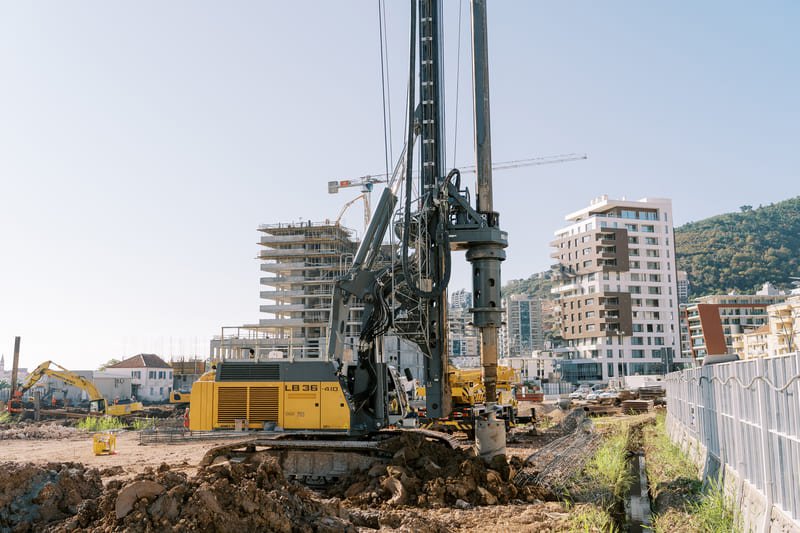
Understanding DTH Bits in Environmental Drilling
When I first encountered DTH bits, I was amazed at their precision and efficiency13. Picture this: I'm standing on a site where the ground beneath us holds secrets about pollution levels and groundwater quality. With DTH bits, we can accurately penetrate various ground conditions, making them invaluable for environmental assessments.
Monitoring Well Installation
One of the most fascinating aspects of using DTH bits is installing monitoring wells. I remember working on a project where we had to collect groundwater samples to analyze water quality over time. Thanks to the precise drilling these bits offer, we minimized disruption to the environment while gathering critical data.
| Use Case | Description |
|---|---|
| Groundwater Sampling | Collection of samples to analyze water quality. |
| Soil Gas Sampling | Used for assessing vapor extraction and contamination. |
| Remediation Projects | Facilitates in-situ remediation by providing access points. |
Role in Soil Gas Sampling
DTH bits truly shine when drilling wells for soil gas sampling and vapor extraction, especially in areas with soil contamination. I once worked on a site where understanding how contaminants were volatilizing was crucial. These bits provided the access we needed to measure and eventually tackle the issue head-on.
Contribution to Remediation Projects
In my experience with in-situ remediation, DTH bits are indispensable. They create boreholes that allow us to inject remediation agents directly into contaminated zones. This method has been a game-changer in treating pollutants like hydrocarbons or heavy metals effectively.
Geotechnical Testing and Assessments
Before we dive into construction or remediation projects, geotechnical assessments are essential. DTH bits help us install instruments that measure site properties like permeability and porosity, which are critical for understanding subsurface geology.
Installing Piezometers with DTH Bits
Monitoring water levels and pore pressure is another vital task made possible by DTH bits. Installing piezometers allows us to evaluate hydrogeological impacts of various activities, ensuring minimal disruption to the environment as projects proceed.
- Instrument Installation: Precise boreholes for accurate placement of geotechnical instruments.
- Hydrogeological Monitoring: Continuous data collection to assess impacts on water resources.
By facilitating exploratory drilling, DTH bits support comprehensive environmental impact assessments14, gathering necessary data to evaluate potential environmental risks associated with major projects.
DTH bits are used in groundwater sampling.True
DTH bits help install monitoring wells for groundwater sample collection.
DTH bits do not aid in soil gas sampling.False
DTH bits are crucial for drilling wells in soil gas sampling efforts.
Conclusion
DTH drill bits are essential in environmental drilling, providing precision for groundwater sampling, soil gas monitoring, and remediation while efficiently penetrating tough substrates.
-
Exploring how DTH bits maintain borehole integrity helps understand their precision and reliability in environmental drilling projects. ↩
-
Understanding the versatility of DTH bits in various environmental applications showcases their adaptability and broad utility. ↩
-
Gain insights into how DTH bits perform across different geological conditions, enhancing sampling efficiency. ↩
-
Discover how controlling volatilization during sampling is crucial for accurate environmental assessments. ↩
-
Explore methods for ensuring data accuracy in extended environmental monitoring projects. ↩
-
Explore the benefits of using DTH bits for precise drilling and sample collection in remediation. ↩
-
Discover how DTH bits achieve precise boreholes, essential for reliable geotechnical data. ↩
-
Learn about the adaptability of DTH bits in various soil and rock formations. ↩
-
Explore the benefits of using DTH bits for rapid and efficient geotechnical drilling. ↩
-
Understand how DTH bits reduce environmental impact in sensitive areas. ↩
-
Understand the significance of monitoring groundwater levels for environmental and construction projects. ↩
-
Discover how reliable groundwater measurements can inform effective agricultural strategies. ↩
-
Understanding the precision of DTH bits helps assess their effectiveness in minimizing environmental impact during drilling. ↩
-
This link provides insights into the role of DTH bits in evaluating environmental risks, enhancing project planning. ↩







